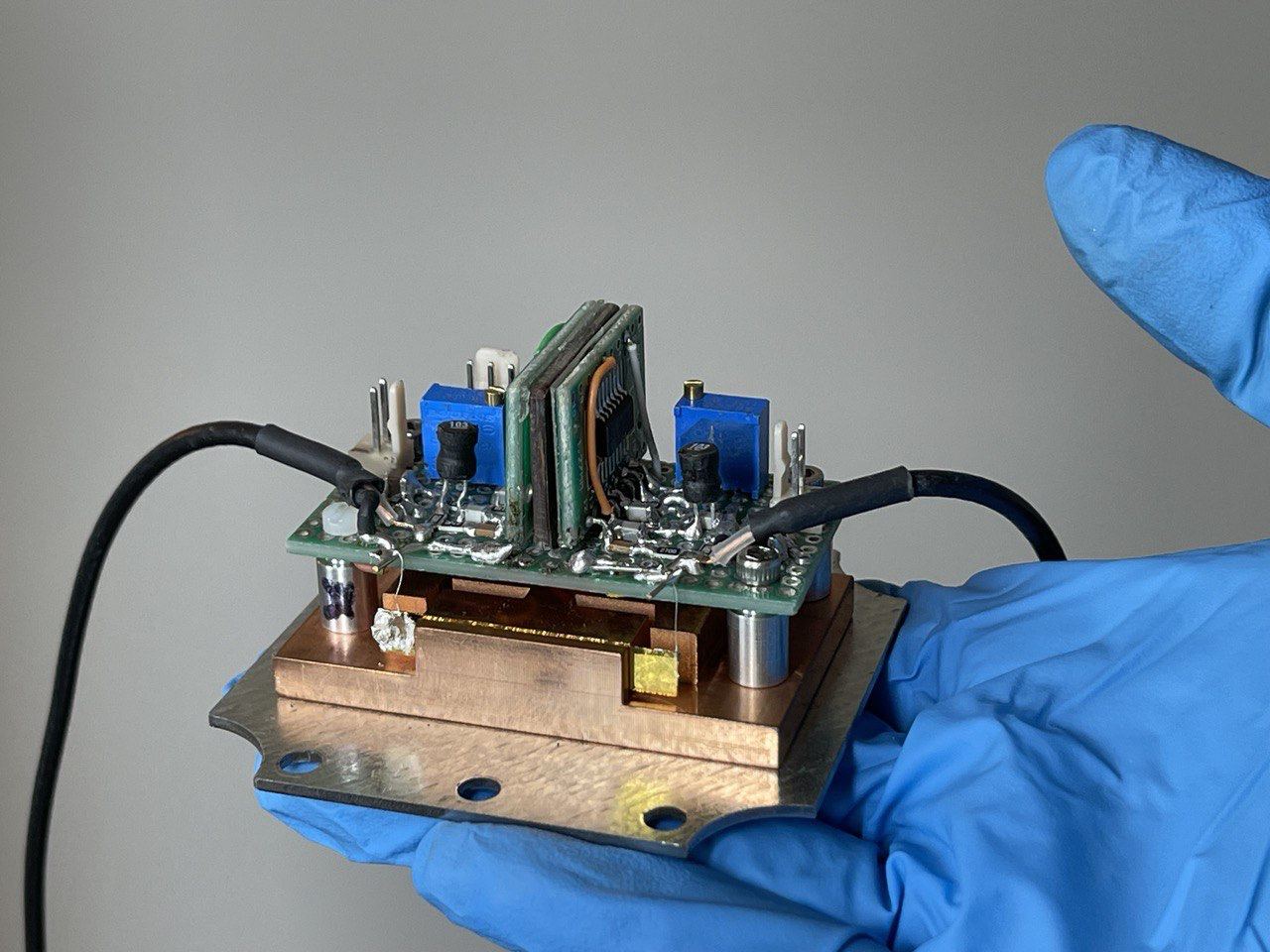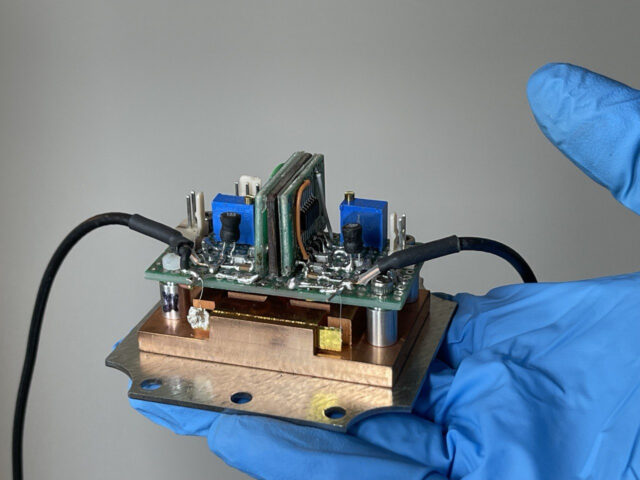New Sensor Will Help Improve Safety in Aviation, Biology, and More


Tsampikos Kottos, the Lauren B. Dachs Endowed Professor of Science and Society, is passionate about the importance of sensors in our everyday lives and believes his most recent efforts will improve safety in fields as varied as aviation, biology, and food safety.
“Nothing in this universe can work without sensing. The human body is an amazing sensor, starting from the brain all the way down to the toes,” Kottos said. “We are trying to learn from what nature has created.”
Kottos, along with Rodion Kononchuk, postdoctoral physics research associate in Wesleyan’s Wave Transport in Complex Systems Laboratory, Professor of Physics Fred Ellis and a team from the University of Wisconsin-Madison that includes Ramathasan Thevamaran and Jizhe Cai, have developed a new sensor – an electromechanical accelerometer – that can better measure small variations in acceleration without an increase in noise, which allows the sensor to take extraordinarily precise measurements. The scheme relies at the existence of a mathematic peculiarity – a degeneracy – occurring in the resonant spectrum of a special class of systems that incorporate balanced amplification and attenuation mechanisms. The advance opens the door to new hypersensitive sensors that can detect tiny signatures that a perturbing agent leaves on a system.
The real-world ramifications of the work include improving safety in telecommunications, environmental and climate monitoring, extraordinary platform stabilization and more accurate avionic systems. For example, a sensor based on this new technology could be sensitive enough to detect a single tiny bio-agent, helping to avoid bio-threats or increase our understanding of biological processes.
Such sensors could also be useful for monitoring the health of various structures, such as airplane wings and bridges.
“When a tiny crack occurs in an airplane wing, the mechanical properties of the structure will change and we should be able to detect that with a sensor that’s hypersensitive to the system’s parameters,” says Ramathasan Thevamaran, an assistant professor of engineering physics at UW-Madison who co-led the research. “So, this would allow us to detect much, much smaller cracks earlier—before they can grow into larger cracks that can lead to catastrophic failures. And we could embed these sensors in structures, allowing us to non-destructively evaluate their health.”
The team’s research will be published in the journal Nature on July 27, 2022.

Working with sensor technology has been in the forefront of Kottos’ research for over a decade. Going back to 2011, he and his team, together with Ellis, had a sense of the problem but focused on the underlying mathematical components and physical phenomena of the issue rather than the technological ones. “We had too much of an ‘in-the-box academic’ way of thinking,” said Kottos, who heads Wesleyan’s Wave Transport in Complex Systems Laboratory.
Kottos began research for the new hypersensitive avionic sensor design in 2018 after receiving a grant from the U.S. Department of Defense. The team made steady progress, with the newest breakthrough happening in the past year. “It is fair to say that my post-doctoral associate Dr. Kononchuk was influential for the success of this project”, Kottos says.
Right now, Kottos and his group is working to develop a tiny sensor that will detect the presence of malignant software in telecommunication systems. ‘This is something that we are in the very first stages of developing and has been recently funded from NSF and the private sector. It’s going to be a long road,” he said.
The process of developing the sensor reflects one of Kottos’ strongly held beliefs – that science should and must tackle practical needs when possible. “We have good ideas and whenever we can help society, it is our responsibility to do so. We must not forget that as scientists, we are servants of society. We have to address its needs; if possible before they will emerge” he said.
Wesleyan University via the office of Academic Affairs and the Wisconsin Alumni Research Foundation (WARF) have co-sponsored a pending patent of the invention.

